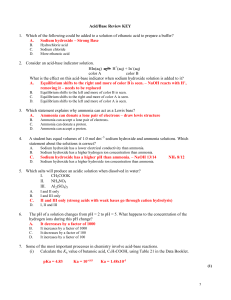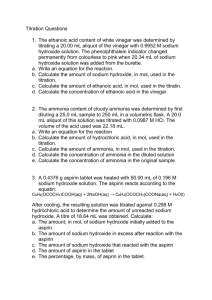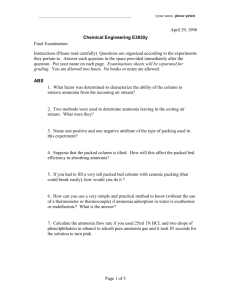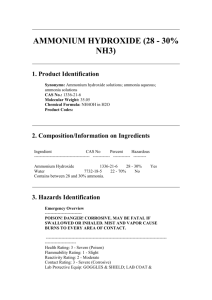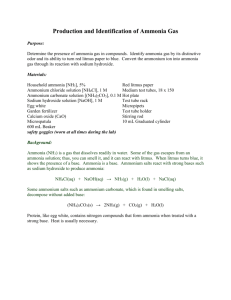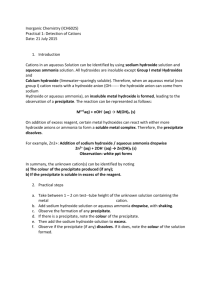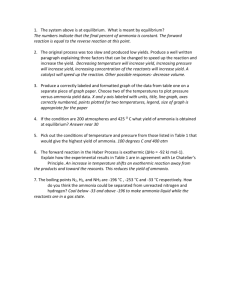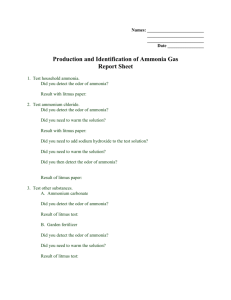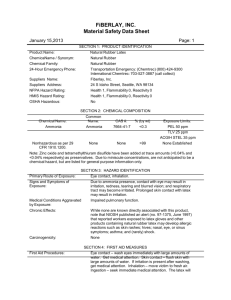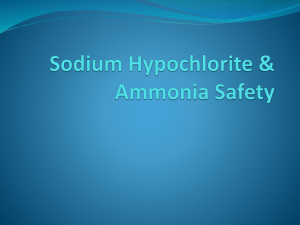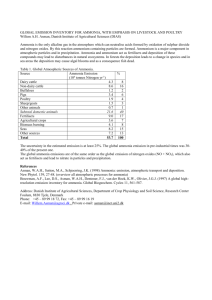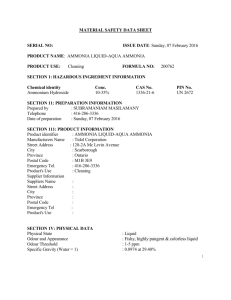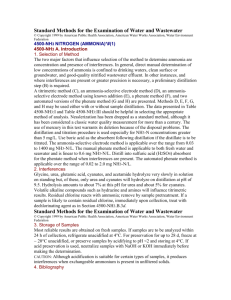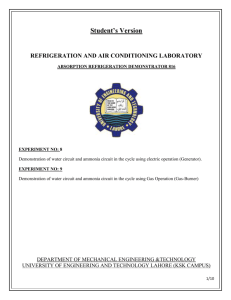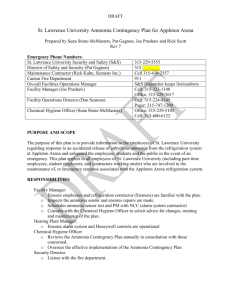Acid/Base Review Which of the following could be added to a
advertisement
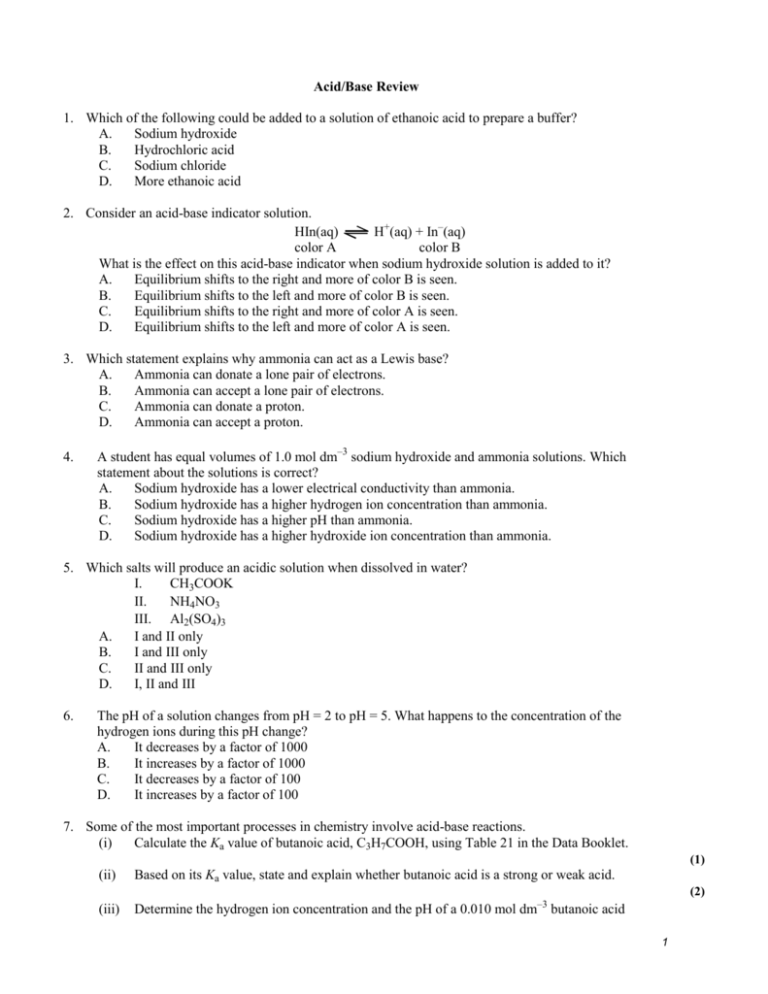
Acid/Base Review 1. Which of the following could be added to a solution of ethanoic acid to prepare a buffer? A. Sodium hydroxide B. Hydrochloric acid C. Sodium chloride D. More ethanoic acid 2. Consider an acid-base indicator solution. HIn(aq) H+(aq) + In–(aq) color A color B What is the effect on this acid-base indicator when sodium hydroxide solution is added to it? A. Equilibrium shifts to the right and more of color B is seen. B. Equilibrium shifts to the left and more of color B is seen. C. Equilibrium shifts to the right and more of color A is seen. D. Equilibrium shifts to the left and more of color A is seen. 3. Which statement explains why ammonia can act as a Lewis base? A. Ammonia can donate a lone pair of electrons. B. Ammonia can accept a lone pair of electrons. C. Ammonia can donate a proton. D. Ammonia can accept a proton. 4. A student has equal volumes of 1.0 mol dm–3 sodium hydroxide and ammonia solutions. Which statement about the solutions is correct? A. Sodium hydroxide has a lower electrical conductivity than ammonia. B. Sodium hydroxide has a higher hydrogen ion concentration than ammonia. C. Sodium hydroxide has a higher pH than ammonia. D. Sodium hydroxide has a higher hydroxide ion concentration than ammonia. 5. Which salts will produce an acidic solution when dissolved in water? I. CH3COOK II. NH4NO3 III. Al2(SO4)3 A. I and II only B. I and III only C. II and III only D. I, II and III 6. The pH of a solution changes from pH = 2 to pH = 5. What happens to the concentration of the hydrogen ions during this pH change? A. It decreases by a factor of 1000 B. It increases by a factor of 1000 C. It decreases by a factor of 100 D. It increases by a factor of 100 7. Some of the most important processes in chemistry involve acid-base reactions. (i) Calculate the Ka value of butanoic acid, C3H7COOH, using Table 21 in the Data Booklet. (1) (ii) Based on its Ka value, state and explain whether butanoic acid is a strong or weak acid. (2) (iii) –3 Determine the hydrogen ion concentration and the pH of a 0.010 mol dm butanoic acid 1 solution. State one assumption made in your calculation. (4) (Total 7 marks) 8. (i) Define the terms acid and base according to the Brønsted-Lowry theory. Distinguish between a weak base and a strong base. State one example of a weak base. (ii) Weak acids in the environment may cause damage. Identify a weak acid in the environment and outline one of its effects. (3) (2) (Total 5 marks) 9. A 0.20 mol dm–3 ammonia solution is placed in a flask and titrated with a 0.20 mol dm–3 hydrochloric acid solution. (i) Explain why the pH of the ammonia solution is less than 12. (2) (ii) Estimate the pH at the equivalence point for the titration of hydrochloric acid with ammonia and explain your reasoning. (iii) State the equation for the reaction of ammonia with water and write the Kb expression for NH3(aq). (iv) When half the ammonia has been neutralized (the half-equivalence point), the pH of the solution is 8.25. Deduce the relationship between [NH3] and [NH4+] at the half-equivalence point. (v) Determine pKb and Kb for ammonia based on the pH at the half-equivalence point. (vi) Describe the significance of the half-equivalence point in terms of its effectiveness as a buffer. (2) (2) (1) (3) (1) (Total 11 marks) 10. The graph below indicates the pH change during the titration of 20.0 cm3 of 0.100 mol dm–3 of CH3COOH(aq) with 0.100 mol dm–3 KOH(aq). From the graph, identify the volume of KOH(aq) and the pH at the equivalence point. 11. Define an acid in terms of the Lewis theory. Deduce, giving a reason, whether NBr3 is able to function as a Lewis acid or as a Lewis base. (Total 2 marks) 2
